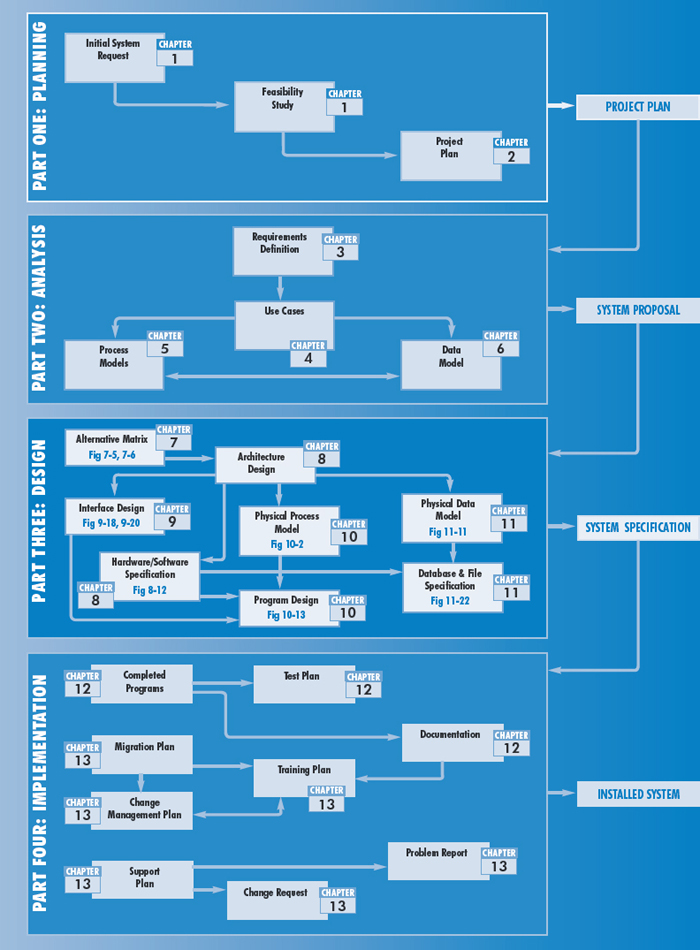
CHAPTER 14
THE MOVEMENT TO OBJECTS
The field of systems analysis and design now incorporates object-oriented concepts and techniques, by which a system is viewed as a collection of self-contained objects that include both data and processes. Objects can be built as individual pieces and then put together to form a system, leading to modular, reusable project components. In 1997, the Unified Modeling Language (UML) was accepted as the standard language for object development. This chapter describes the four most effective UML models: the use case diagram, class diagram, sequence diagram, and behavioral state machine diagram.
OBJECTIVES
- Explain the basic concepts of the object approach and UML.
- Be able to create a use case diagram.
- Be able to create a class diagram.
- Be able to create a sequence diagram.
- Be able to create a behavioral state machine diagram.
CHAPTER OUTLINE
Introduction
Basic Characteristics of Object-Oriented Systems
Classes and Objects
Methods and Messages
Encapsulation and Information Hiding
Inheritance
Polymorphism and Dynamic Binding
Object-Oriented Systems Analysis and Design
Use Case Driven
Architecture Centric
Iterative and Incremental
Benefits of Object-Oriented Systems Analysis and Design
Unified Modeling Language Version 2.0
The Rational Unified Process (RUP)
Four Fundamental UML Diagrams
Use Case Diagram
Elements of a Use Case Diagram
Creating a Use ...
Get System Analysis and Design, Fifth Edition now with the O’Reilly learning platform.
O’Reilly members experience books, live events, courses curated by job role, and more from O’Reilly and nearly 200 top publishers.

